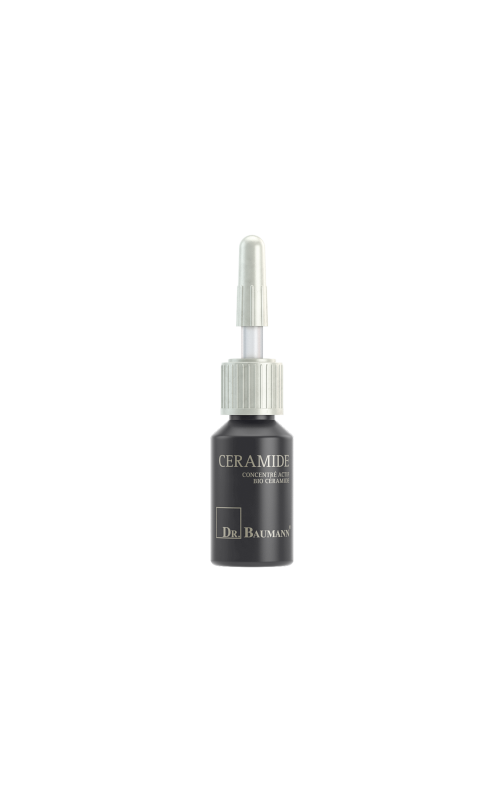Well Medica Shop
CERAMIDE
CERAMIDE
Couldn't load pickup availability
ampoules
Despite rich care, skin can appear flaky and brittle if the lipids of the stratum corneum, and thus its barrier function, are compromised, e.g., due to aging, environmental influences, etc. The affected intercellular substance of the stratum corneum consists primarily of ceramides and other lipids. The CERAMIDE ampoule can effectively counteract brittle, flaky skin. It is also ideal for supplemental care of skin prone to atopic dermatitis and psoriasis.
7 ml ampoule
Item No. 1050
INCI declaration of ingredients:
Aqua, Butylene Glycol, Alcohol, PEG-40 Hydrogenated Castor Oil, Pentylene Glycol, Urea, Sodium Lactate, Glycosphingolipids (and) Phosphosphingolipids, Lactic Acid, Sodium Hyaluronate, Allantoin, Sodium Hydroxide
Further explanations of the ingredients:
Aqua:
Water. It makes up approximately 65% of the human body's weight and is therefore of fundamental importance for bodily functions, including those of the skin. In many cosmetic products (aqueous solutions, cleaning agents, emulsions), water is the ingredient with the largest quantitative proportion in the formulation and forms the basis of the aqueous phase in emulsions. Water is a good solvent for polar (hydrophilic) substances such as alcohols, water-soluble vitamins, or salts. For use in cosmetic products, the water used is generally pretreated to remove microorganisms that could lead to product spoilage or dissolved salts that could potentially impair the stability of emulsions or gels (sterilization and desalination).
Butylene Glycol:
Solvent with moisturizing effect on the skin, very good tolerability, should be preferred to propylene glycol in daily used products
Alcohol:
Ethyl alcohol: Body-identical. Refreshing and antibacterial. Also acts as a solvent for other ingredients. Contrary to claims, there is no risk of a drying effect on the skin at normal use concentrations!
PEG-40 Hydrogenated Castor Oil:
Castor oil-based solubilizer for essential oils in water.
Pentylene Glycol:
Pentanediol, moisturizer, good skin tolerance, should be used primarily in cleansing products and less in creams
Urea:
Water-soluble urea is used in numerous cosmetic products. Urea is a component of the natural moisturizing factors of the stratum corneum (content between 7% and 12%; up to half that in chronically dry skin) and has a high water-binding capacity. It contributes to the long-lasting moisturization of the skin and reduces transepidermal water loss. Urea has a keratoplastic effect, and in higher concentrations, a keratolytic effect, and is therefore also used to care for skin affected by psoriasis or atopic dermatitis (neurodermatitis). Urea is also able to reduce the irritating potential of surfactants.
Sodium Lactate:
Sodium lactic acid salt: Has a moisturizing effect on the skin, with the skin's physiological pH value averaging 5.5. An important component of the skin's natural moisturizing factor (NMF) and its protective acid mantle.
Glycosphingolipids (and) Phosphosphingolipids:
Precursor ceramides; are converted into the nourishing free ceramides on the skin surface
Lactic Acid:
Lactic acid. Occurs as a metabolic product in the body and on the skin. In higher concentrations and at a low pH of 2 to 3, it has an exfoliating effect on the stratum corneum. In buffered form (physiological pH of the skin is approximately 5.5), it supports moisture content and preserves the skin's protective acid mantle.
Sodium Hyaluronate:
Sodium salt of hyaluronic acid. A natural moisturizer with skin-smoothing properties, an important natural component of the lower layers of the skin (dermis). Formerly made from rooster combs, it is now produced biotechnologically in better quality.
Allantoin:
Allantoin is a body-identical, water-soluble substance and chemically related to urea. It occurs in various plants but is now synthetically produced for use in cosmetics. Its most important property is the stimulation of cell regeneration. It promotes collagen formation, skin regeneration, and wound healing, stimulates desquamation, smoothes the skin, and can have a soothing effect on atopic dermatitis.
Sodium hydroxide:
Sodium hydroxide. Used to adjust the pH of cosmetic products. Sodium and hydroxide ions are identical in the body.
Share


